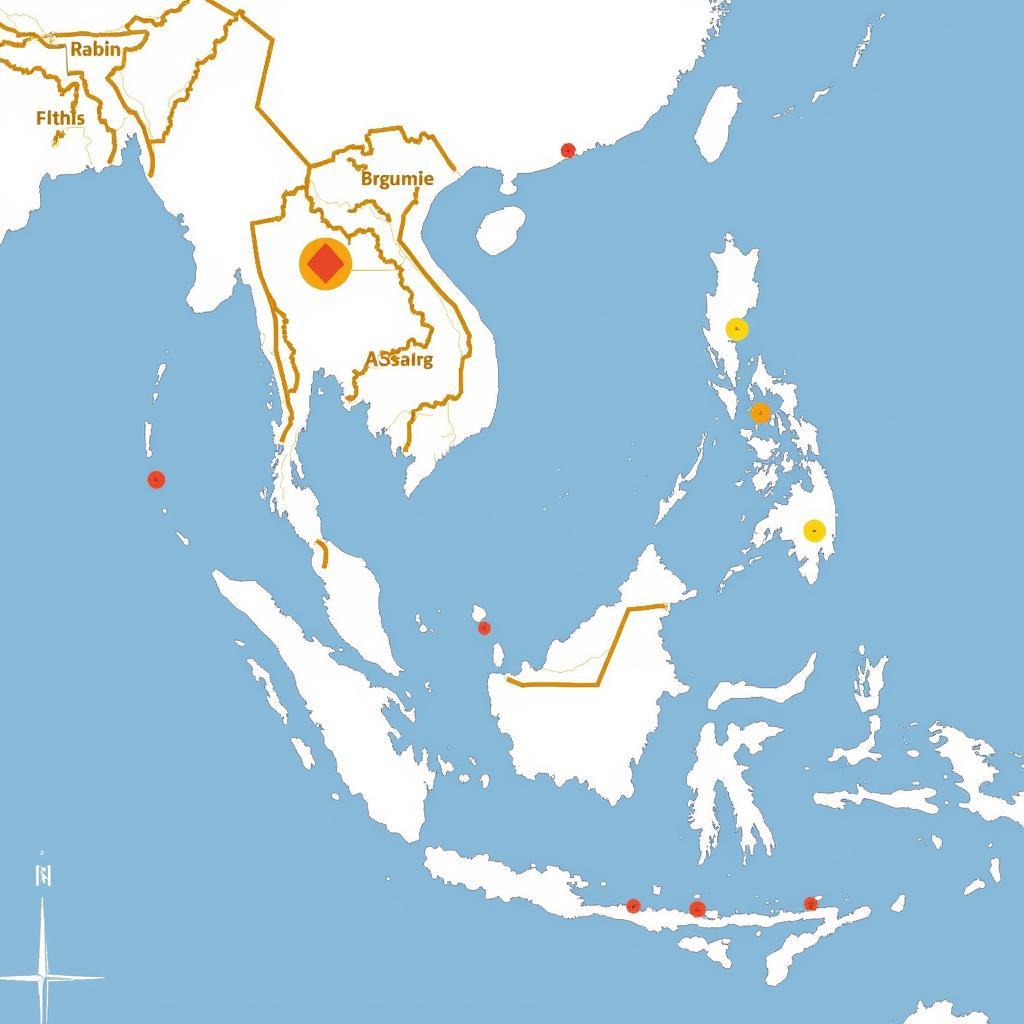The need for “Asean Better Faster Disaster Relief” has never been more critical as the region faces increasing climate change impacts and natural disasters. With diverse vulnerabilities and capacities across Southeast Asia, a unified and coordinated approach is vital for effective disaster response. This necessitates not only robust national mechanisms but also strong regional collaboration to ensure timely and efficient assistance reaches those most affected.
The Urgency of a Coordinated Response
 Map of ASEAN countries and disaster-prone areas
Map of ASEAN countries and disaster-prone areas
The geographical location of ASEAN countries makes them particularly susceptible to a range of natural disasters. From typhoons and floods to earthquakes and volcanic eruptions, the region experiences a high frequency of these events, often with devastating consequences. The impact of climate change is further exacerbating these risks, leading to more frequent and intense disasters. This reality underscores the urgent need for a cohesive and efficient disaster relief mechanism that can respond swiftly and effectively to minimize loss of life and property.
Building a Faster, More Efficient System
Improving ASEAN’s disaster relief capabilities requires a multi-pronged approach focused on preparedness, response, and recovery:
- Early Warning Systems: Investing in advanced and integrated early warning systems is crucial. This includes real-time data sharing on weather patterns, seismic activity, and other hazard indicators to provide timely warnings and facilitate pre-emptive evacuations.
- Joint Training and Exercises: Conducting regular joint training exercises involving disaster relief agencies from different ASEAN countries is essential. These exercises should simulate various disaster scenarios, allowing for the testing and refinement of communication protocols, search and rescue strategies, and the coordination of relief efforts.
- Pre-Positioned Resources: Strategically positioning essential resources, such as medical supplies, food, and temporary shelters, in disaster-prone areas within the ASEAN region can significantly reduce response times and ensure aid reaches those in need more quickly.
- Standardized Procedures: Establishing standardized procedures for requesting and providing assistance within ASEAN can streamline the relief process. This includes a clear chain of command, agreed-upon communication channels, and pre-defined roles and responsibilities for each participating country.
The Power of Regional Cooperation
ASEAN has taken significant steps in enhancing disaster relief cooperation, particularly through the establishment of the AHA Centre. This specialized institution plays a pivotal role in coordinating regional disaster management initiatives. However, continuous effort is needed to strengthen its capacity and mandate further.
Dr. Suthida Chang, a leading expert in disaster risk reduction in Southeast Asia, emphasizes, “ASEAN must move beyond ad-hoc responses to disasters. We need a proactive approach that emphasizes preparedness, regional resource sharing, and the seamless integration of national disaster management agencies.”
A Future of Shared Responsibility
Achieving “ASEAN better faster disaster relief” is not merely a logistical goal but a shared responsibility that requires collective action. By prioritizing regional cooperation, investing in preparedness measures, and fostering a culture of shared responsibility, ASEAN can build greater resilience and ensure a safer future for its citizens.
FAQs
1. What is ASEAN’s role in disaster relief?
ASEAN plays a coordinating role in facilitating cooperation among member states on disaster management. This includes sharing information, providing technical assistance, and mobilizing resources for disaster relief efforts.
2. What are some of the challenges to effective disaster relief in ASEAN?
Challenges include diverse national capacities, varying levels of disaster preparedness, and geographical factors that can hinder access to remote areas.
3. How can technology improve ASEAN’s disaster response?
Technology can be instrumental in developing early warning systems, facilitating communication and coordination among disaster relief agencies, and enabling more efficient resource allocation.
4. What is the role of the private sector in disaster relief?
The private sector can play a vital role by providing logistical support, financial resources, and technical expertise to support disaster relief efforts.
5. How can individuals contribute to disaster preparedness?
Individuals can contribute by having a disaster preparedness plan for their families, participating in community-based disaster drills, and supporting organizations working on disaster risk reduction.
Need Assistance?
For any inquiries or support regarding ASEAN disaster relief initiatives, please don’t hesitate to contact us:
Phone: 0369020373
Email: [email protected]
Address: Thon Ngoc Lien, Hiep Hoa, Bac Giang, Vietnam
Our dedicated customer support team is available 24/7 to assist you.

